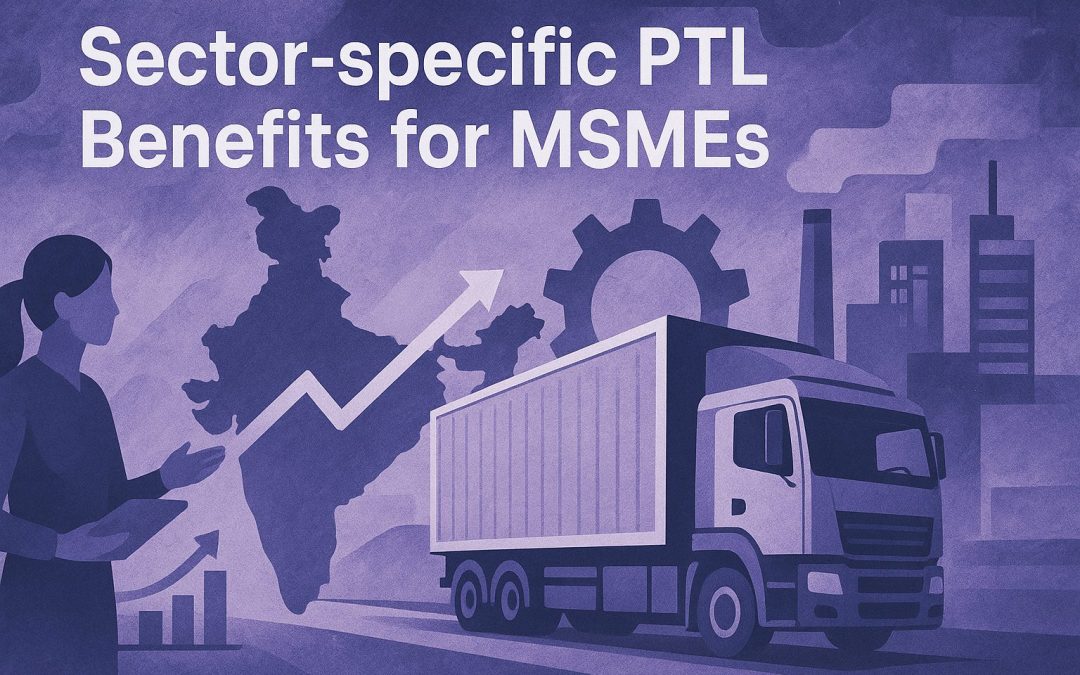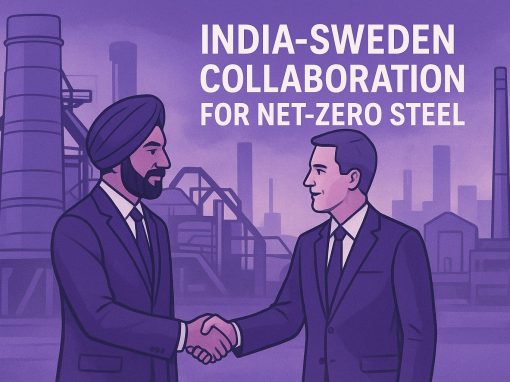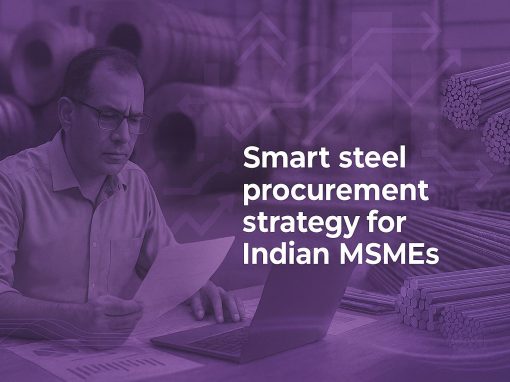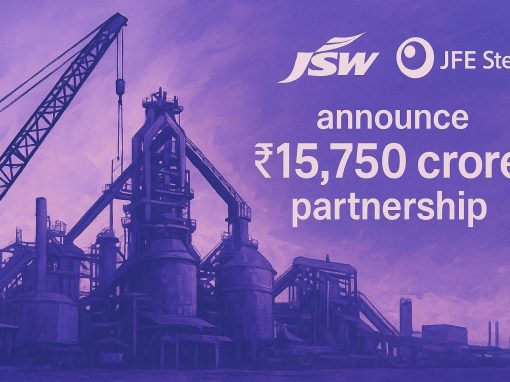Table of Contents
Partial Truck Load (PTL) logistics offers MSMEs in India a practical middle ground between Full Truck Load (FTL) and Less-than-Truckload (LTL) logistics. Unlike FTL, where businesses must bear the full cost of a truck, or LTL, which often delays deliveries due to multiple handling points, PTL allows MSMEs to pay only for the space they need while still ensuring faster, more reliable transit.
This balance is crucial for MSMEs that operate with tight margins, limited inventory capacity, and sensitive cash flows. By reducing logistics costs without compromising delivery speed, PTL helps small businesses stay competitive, manage working capital better, and cater efficiently to diverse customer demands.
MSMEs and PTL Logistics in India
India’s Micro, Small and Medium Enterprises (MSMEs) are a central pillar of the economy, both in terms of scale and impact. As of May 2025, there are about 6.44 crore (64.4 million) MSMEs registered on the Udyam Registration Portal and Udyam-Assist Platform, employing approximately 26.77 crore (267.7 million) persons. Their contribution to India’s Gross Value Added (GVA) has held steady at roughly 30% of GDP in recent years. Meanwhile, MSMEs’ contribution to exports has also surged: for example, exports by MSMEs rose from around ₹3.95 lakh crore in 2020-21 to ₹12.39 lakh crore in 2024-25, while the number of exporting MSMEs increased from ~52,849 to ~173,350 over the same period.
However, despite these impressive numbers, MSMEs face persistent logistical challenges which impede efficiency, increase costs, and limit scalability.
| Logistics Pain Point | Operational Impact on MSMEs |
| Small/irregular shipment volumes | Higher per-unit transport cost, lower bargaining power, under-utilised vehicle space. |
| Poor last-mile/first-mile connectivity | Delays in supply and delivery, increased damage, higher costs in remote areas. |
| Lack of warehousing near hubs/markets | Longer transit times, higher inventory in transit or buffer stocks, increased storage/handling cost. |
| Seasonal/disruption-prone infrastructure (roads, weather) | Unpredictable lead times, service failures, higher maintenance and insurance costs. |
| Working capital constraints (due to cash flow & payment delays) | Difficulty in prepaying transport, inability to invest in reliable logistics partners, risk of default/inability to scale. |
Top Benefits of PTL Logistics for MSMEs
PTL logistics offers a compelling mix of cost efficiency, agility, and sustainability for MSMEs. Below are the key benefits.
Cost Savings & Better Asset Utilisation
By sharing truck space, MSMEs can reduce per-unit transport costs significantly versus booking a full truck when volumes are low. Industry sources suggest PTL can reduce costs by 15 % to 35 % relative to FTL on many routes (depending on load density, distance, and truck backhaul utilisation).
KPIs:
- Cost per kg shipped
- Cost per cubic metre (m³)
- Landed cost per SKU
Improved Cash Flow & Working Capital
With PTL, MSMEs don’t need to wait until they have a full truck’s worth of goods. They can ship smaller lots more frequently, reducing the need for large buffer inventory and freeing up capital.
KPIs:
- Inventory turnover ratio
- Days Sales of Inventory (DSI)
Reduced Lead Times & Faster Market Response
Regularly scheduled PTL lanes reduce reliance on complex multi-stop consolidation networks, cutting transit time and increasing responsiveness to demand. MSMEs can deliver faster and more reliably.
KPIs:
- Average order-to-delivery lead time
- On-Time-In-Full (OTIF) percentage
Flexibility & Scalability
PTL enables MSMEs to adapt to seasonal demand spikes, batch production, or spot orders without overcommitting to capacity. The ability to scale up or down is built in.
KPI:
- Percentage of ad-hoc shipments handled vs planned shipments
Lower Risk of Stockouts and Overstocks
Frequent, smaller shipments better align supply with actual demand, reducing the chances of stockouts or overstocking.
KPI:
- Stockout incidents per quarter
Sustainability Gains
Better truck fill rates lead to fewer empty miles and thus lower emissions per unit transported. India’s road freight emission factors provide a basis: for diesel freight vehicles, emission factors in India are often around 0.1 kg CO₂ per tonne-km (i.e. ~100 g CO₂ per tonne-km) as per India GHG Program and related studies. If PTL improves utilisation by e.g. 20–30 %, the emission per unit can decline proportionally.
KPI:
- CO₂ emissions (or equivalent) per tonne-km
Case Example
A textile MSME in Tirupur switched from a weekly full-truck dispatch to twice-weekly PTL consolidation. They reduced per-unit transport cost by ~25 %, improved delivery flexibility into secondary markets, lowered inventory holding by 10 days, and cut CO₂ emissions per unit by ~18 %.
A Practical Checklist for PTL Logistics
For MSMEs, adopting PTL logistics is not only about choosing a transport option but also about building a disciplined operational process. A structured approach helps ensure that the benefits of PTL such as cost savings, agility, and reduced risks are realised consistently. Below is a step-by-step guide MSMEs can use to implement PTL logistics effectively.
Step 1 – Assess Your Shipment Profile
Before engaging with a logistics partner, MSMEs should understand their own freight patterns. Key parameters include:
- Cubic volume: How much space consignments typically occupy.
- Density: Weight per cubic metre, as dense loads may be billed differently than light, bulky goods.
- Frequency: Daily, weekly, or seasonal dispatches.
- Value & fragility: Higher-value or fragile shipments may require additional packaging or insurance.
Step 2 – Select the Right PTL Service Type
PTL services are generally offered in two formats:
- Scheduled PTL lanes: Fixed, pre-defined routes with predictable departure times. They are cost-efficient and reliable for regular flows.
- On-demand PTL: Flexible services suited for urgent or irregular shipments, often at slightly higher cost.
Step 3: Adopt Packing & Palletisation Standards
Efficient consolidation depends on standardised packaging:
- Use stackable cartons or pallets to optimise truck space.
- Follow standard dimensions (e.g., 1000×1200 mm pallets) for ease of handling.
- Invest in protective materials for fragile goods. Consistent packaging reduces damage risk, improves load planning, and speeds up handling.
Step 4: Ensure Documentation & Compliance
MSMEs must comply with GST and logistics regulations:
- E-invoices for shipments above the prescribed turnover threshold.
- E-waybills for goods exceeding ₹50,000 in value (rules vary by state).
- Waybills and invoices must match shipment details to avoid penalties.
Having accurate, digital-ready documentation also accelerates loading and transit.
Step 5: Clarify Insurance & Liability Terms
Freight damage or loss is a real risk in shared loads. MSMEs should:
- Check the carrier’s liability coverage limits.
- Purchase additional transit insurance if shipment value exceeds carrier coverage.
- Define responsibility clearly in contracts for theft, delays, or damages.
Step 6: Track & Review Key Performance Indicators (KPIs)
Logistics efficiency requires continuous monitoring. Core PTL KPIs include:
- Cost per kg/per CBM shipped
- Order-to-delivery lead time
- On-Time-In-Full (OTIF) percentage
- Inventory turnover & DSI
- Stockout incidents
Review weekly for operational performance (lead times, OTIF) and monthly for financial KPIs (cost, inventory efficiency).
Sector-specific PTL Benefits
| Sector | Why PTL Fits | Typical Shipment Profile | Cost / Lead-Time Benefits | Operational Risks | Compliance / Regulatory Notes | KPIs to Track | Action Steps |
| Automobile Components & Engineering Goods (Tier-2/3 vendors) | Tier-2/3 suppliers rarely ship FTL volumes; PTL aligns with just-in-time production and frequent dispatch to OEM hubs. | Medium-weight, dense items; frequent shipments of small to medium lots to regional clusters (e.g. Pune, Chennai).. | Savings of 20–30% vs. FTL; faster delivery than LTL ensures production lines don’t stall. | Delays can disrupt OEM schedules; packaging risks (metal parts prone to rust/damage). | GST compliance, e-waybills; export shipments require AD code registration. | OTIF, cost per kg, line stoppage incidents avoided. | 1. Standardise pallet sizes. 2. Create vendor-managed PTL schedules. 3. Invest in rust-preventive packaging. |
| Food & Agribusiness (Perishables) | PTL supports small farmers, FPOs, and processors who can’t fill trucks but need timely, fresh deliveries. | Low-density, time-sensitive goods (fruits, dairy, processed foods); seasonal spikes. | PTL cold-chain services reduce spoilage; delivery cycles shortened by 1–2 days compared to LTL. | High spoilage risk if cold chain breaks; seasonality raises unpredictability. | FSSAI standards, cold-chain traceability, e-waybill thresholds. | Shrinkage/spoilage %; average delivery time; temperature compliance. | 1. Partner with reefer PTL providers. 2. Use insulated crates. 3. Adopt digital traceability for compliance. |
| Pharmaceuticals & Healthcare Products | PTL enables frequent, smaller dispatches to distributors and hospitals, aligning with regulatory standards and shelf-life constraints. | High-value, lightweight, often temperature-controlled; high frequency but low volume per drop. | PTL with cold chain reduces costs by ~18–25% vs dedicated FTL while maintaining delivery reliability. | Strict temperature compliance; high liability risk if damaged or delayed. | CDSCO rules, DGFT codes for exports; GST e-invoicing mandatory; audit trails needed. | % shipments within temperature band; OTIF; stockout frequency at distributors. | 1. Validate carrier’s GDP compliance. 2. Use tamper-proof packaging. 3. Digitise temperature logs. |
| E-commerce & Retail (Small-batch Fulfilment) | PTL matches MSME sellers’ need to move frequent, smaller orders to warehouses, hubs, or directly to retailers. | Lightweight, varied SKUs; unpredictable volumes; high frequency. | PTL reduces costs by ~20% vs FTL while enabling 1–2 day faster replenishment vs LTL. | Risk of damages due to multiple handling; service inconsistency in remote areas. | GST returns linked to warehouse codes; e-waybill rules apply. | Fill-rate %, fulfilment lead time, damaged returns rate. | 1. Use barcode-enabled packaging. 2. Sync PTL dispatch with online order cycles. 3. Negotiate PTL contracts on high-volume lanes. |
| Chemicals & Specialty Materials (Hazardous / Non-Hazardous) | PTL supports MSMEs producing speciality batches that don’t fill full trucks but require safe, compliant transport. | Medium to high-density loads; hazardous chemicals often in drums or IBCs. | Savings of ~15–25% vs FTL; safer than fragmented LTL handling for sensitive goods. | High safety risk if packaging or segregation fails; liability exposure. | Hazardous goods labelling (UN numbers, MSDS); PESO licensing; e-waybill norms. | Incident rate, cost per tonne-km, compliance audit pass %. | 1. Train staff on DG compliance. 2. Use UN-certified drums/labels. 3. Audit carriers for hazmat training. |
| Furniture & Home Goods (Bulky, Low-Density) | PTL suits bulky, space-consuming but lightweight items that rarely justify full trucks. | Low-density, large CBM consignments (sofas, wardrobes); irregular demand. | PTL allows savings of 20–30% vs FTL; reduces lead time by 1–3 days compared to fragmented small-parcel options. | High risk of transit damage; space inefficiency without palletisation. | GST/e-invoicing; packaging waste rules for wooden/plastic materials. | Damage rate %, cost per CBM, delivery satisfaction score. | 1. Switch to modular packaging. 2. Partner with PTL carriers offering blanket wrapping. 3. Implement delivery appointment scheduling. |
| Construction Materials & Allied Products | MSME suppliers of tiles, pipes, fittings, paints, and modular building components often deal in medium-sized, irregular shipments that don’t justify FTL. PTL enables timely supply to distributors, contractors, and project sites. | Medium- to high-weight shipments (cement-based products, sanitary fittings, paints) often in pallets or cartons; demand is project-based and highly variable. | PTL cuts costs by ~18–30% vs hiring full trucks for partial loads; faster than fragmented small-parcel carriers, enabling steady supply to active projects. | Risks include product breakage (tiles, glass), pilferage of high-value items (copper wires), and site delays due to missed deliveries. | BIS labelling on materials, GST/e-waybill rules; paints/chemicals may require hazardous goods compliance. | Cost per tonne-km, delivery punctuality, damage claims %, project downtime due to logistics. | 1. Adopt reinforced palletising/edge protectors for fragile goods. 2. Sync PTL dispatches with project work schedules. 3. Negotiate PTL contracts on high-demand corridors (e.g. Gujarat–Bangalore). |
Recommendations & Roadmap
For MSMEs, the transition to PTL logistics should be phased and practical, aligning with their shipment profile and growth trajectory. A structured roadmap ensures early wins while building a long-term foundation.
Short-term (0–3 months):
Start small with pilot runs on 1–2 key PTL lanes, ideally on routes where shipment volumes are consistent but below FTL thresholds. Define and track basic KPIs such as cost per kilogram, order-to-delivery lead time, and OTIF (On-Time-In-Full) performance. This stage should also involve training staff on packaging standards, documentation accuracy, and digital readiness for e-invoices and e-waybills.
Medium-term (3–12 months):
Once pilots stabilise, MSMEs can integrate a Transportation Management System (TMS) to gain visibility over multiple shipments, automate documentation, and benchmark service performance. At this stage, it is advisable to negotiate volume-based pricing bands with PTL providers and diversify the logistics partner base to reduce dependency on a single carrier. MSMEs should also expand PTL use across more routes, linking suppliers, distributors, and customers more seamlessly.
Long-term (12+ months):
As volumes grow, MSMEs can adopt a networked hub strategy, consolidating flows through regional PTL hubs for efficiency. Co-located mini-warehousing near major markets or production centres can cut down last-mile lead times. In parallel, MSMEs should adopt carbon tracking and green logistics initiatives, as improving truck fill rates through PTL naturally reduces emissions per unit shipped. This not only supports sustainability goals but also enhances eligibility for green financing and global supply chain participation.
In essence, a phased PTL roadmap enables MSMEs to unlock savings quickly, scale with confidence, and future-proof their logistics against market and regulatory shifts.
Conclusion
PTL logistics provides MSMEs in India with a smart balance of cost efficiency, speed, and flexibility.
By allowing smaller, more frequent shipments, it helps ease cash flow pressures while reducing the risk of stockouts. When tailored to sector-specific needs, PTL becomes especially valuable for industries facing variable demand and fragmented supply chains.
With strong packaging practices, compliance discipline, and KPI tracking, logistics can shift from being a bottleneck to a business enabler. The path forward is simple: start with a pilot, measure the results, and scale PTL to drive long-term growth.
Need reliable logistics solutions for your business?
Tata nexarc helps businesses streamline their supply chain with trusted transporters, competitive pricing, and real-time tracking—ensuring timely and cost-effective delivery across India.
FAQs
What is PTL in logistics?
How is PTL different from FTL and LTL?
Why is PTL important for MSMEs in India?
What kind of MSMEs benefit most from PTL?
How much can MSMEs save using PTL?
Does PTL work for perishable or sensitive goods?
What risks should MSMEs watch out for in PTL?
What compliance rules apply to PTL shipments?
How can MSMEs measure PTL performance?
What is the first step to adopt PTL?
A product manager with a writer's heart, Anirban leverages his 6 years of experience to empower MSMEs in the business and technology sectors. His time at Tata nexarc honed his skills in crafting informative content tailored to MSME needs. Whether wielding words for business or developing innovative products for both Tata Nexarc and MSMEs, his passion for clear communication and a deep understanding of their challenges shine through.








